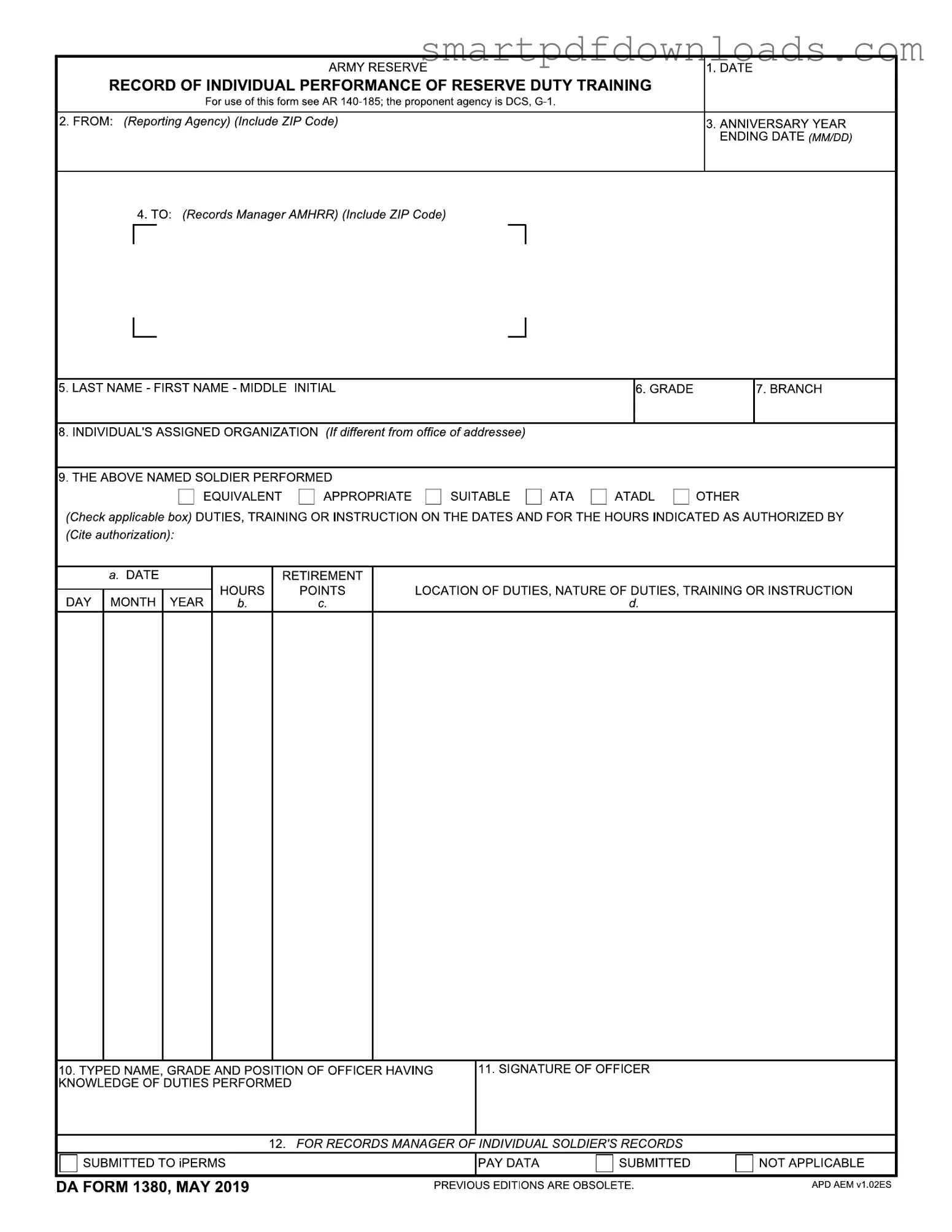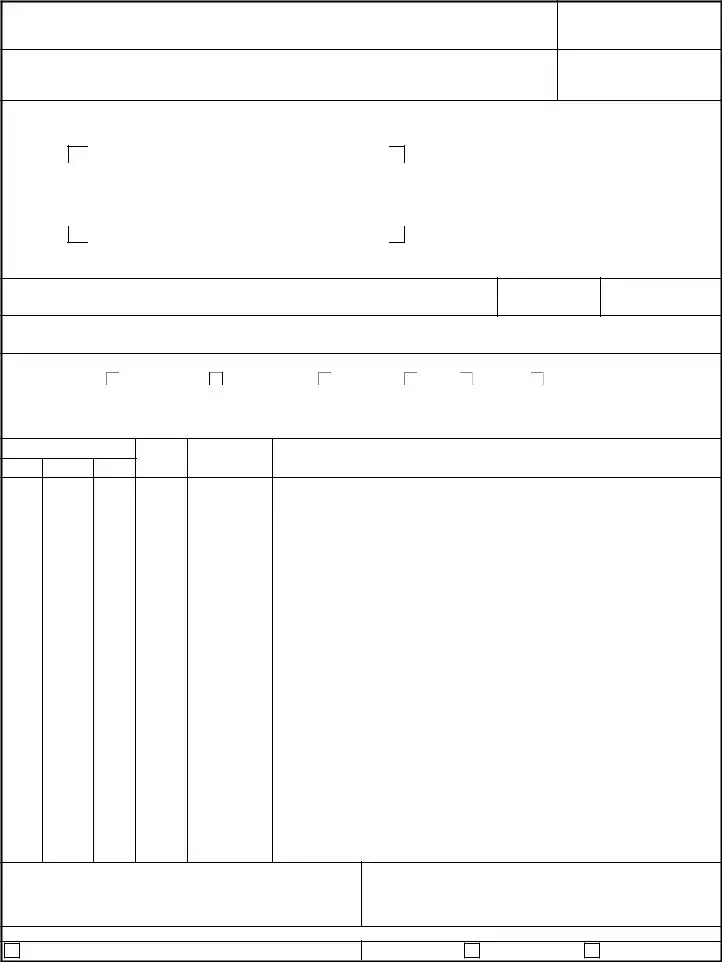Da 1380 Form
The DA Form 1380 is a document used by the Army Reserve to record individual performance during Reserve Duty Training. This form helps ensure that soldiers receive appropriate credit for their training and duties performed. It is essential for maintaining accurate records and facilitating proper compensation for service members.
Edit Da 1380 Online


